computer-aided design
During this week we are asked to explore the different software packages presented for 2D and 3D modeling. These should be used to create sketches for our final project. I used several of the proposed packages with the objective of creating the model of the shoes for the insole.
2D sketching and drawing
Usually I use Sketchup to drawing an idea very fast. Google SketchUp can be used in different stages of the design process but particularly in the early stage of the design process, because of the easy layout. The program is more, like the name describes, a sketch program than a real 3D CAD engineering modelling program for e.g. technical drawings and complicated assemblies. Google SketchUp allows users to “play” around with their designs which are difficult in 3D CAD programs.
first shoe design ( mechanical heel)
In my first idea I was thinking to build a mechanical heel for the shoe.
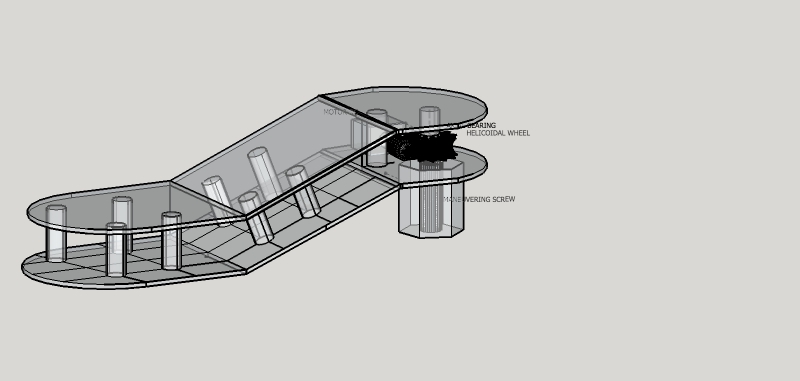
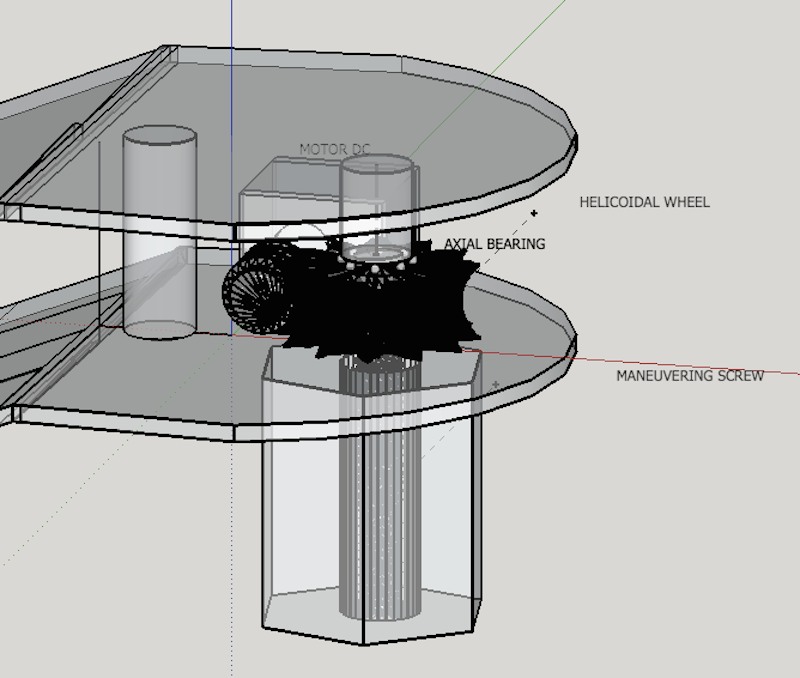
second shoe design
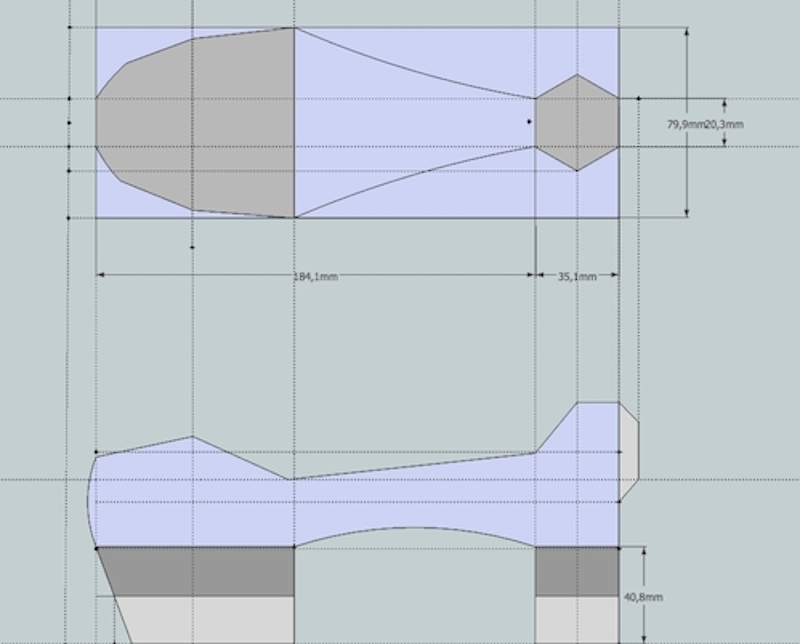
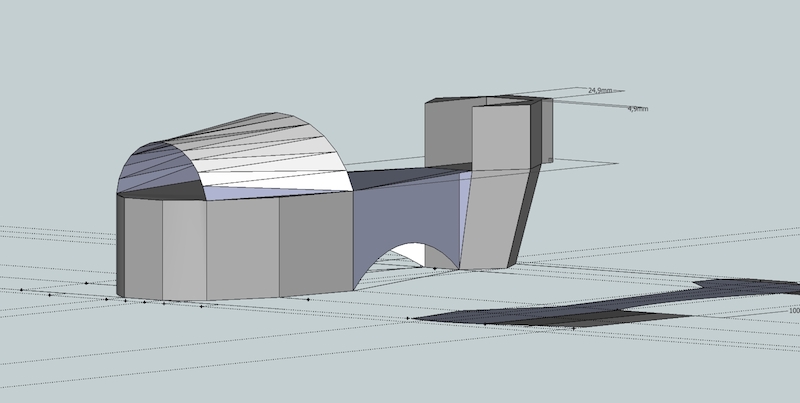
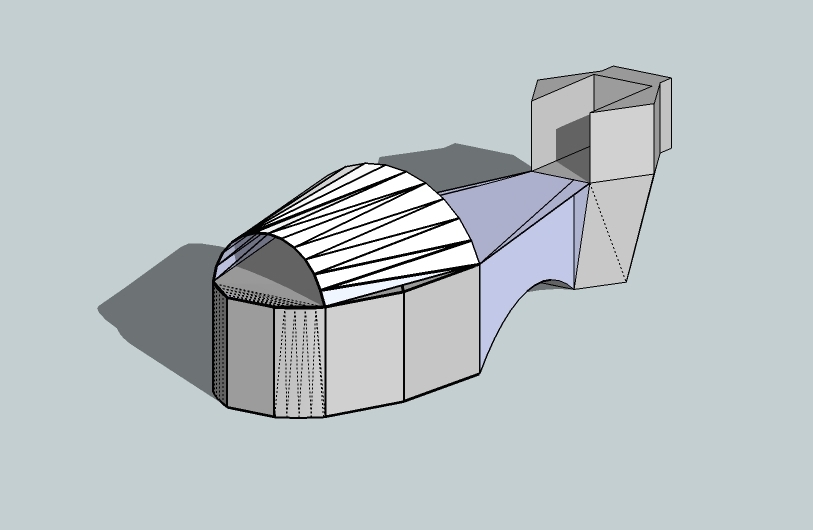
third shoe design ( electronic case)

3d modeling with Rhinoceros
For the second step to modelling my shoe I prefered use Rhinoceros software. Rhinoceros (typically abbreviated Rhino, or Rhino3D) is a commercial 3D computer graphics and computer-aided design (CAD) application software developed by Seattle, WA-based Robert McNeel & Associates, a privately held, employee-owned company that was founded in 1980. Rhinoceros geometry is based on the NURBS mathematical model, which focuses on producing mathematically precise representation of curves and freeform surfaces in computer graphics (as opposed to polygon mesh-based applications).
Rhinoceros is used in processes of computer-aided design (CAD), computer-aided manufacturing (CAM), rapid prototyping, 3D printing and reverse engineering in industries including architecture, industrial design (e.g. automotive design, watercraft design), product design (e.g. jewelry design) as well as for multimedia and graphic design.
So, Rhinoceros is primarily a free form surface modeler that utilizes the NURBS mathematical model. The Rhinoceros file format (.3DM) is useful for the exchange of NURBS geometry. I install a beta version for Mac OSX, so I modelling various version of the shoe for the final project.
final shoe design
That’s the 2D model.
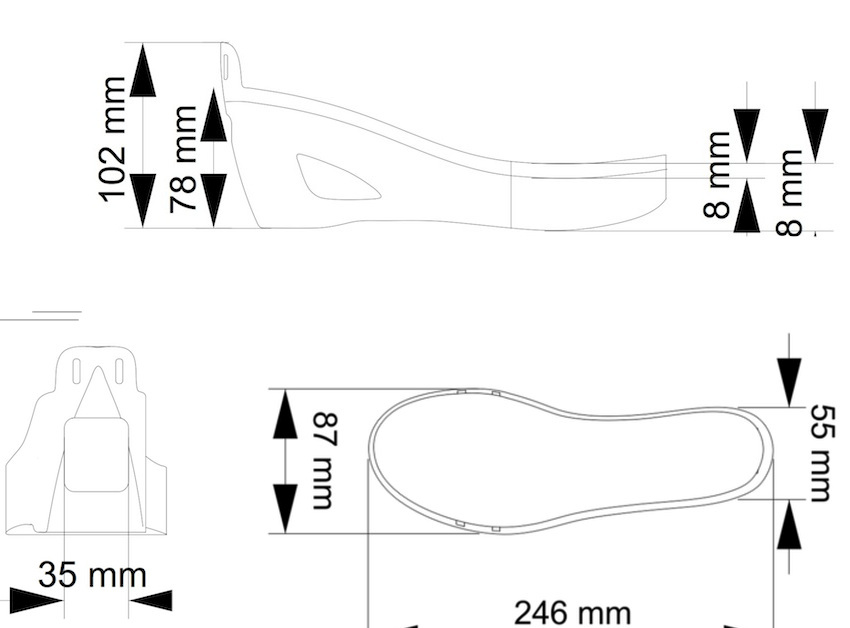
That are 3d model screenshot
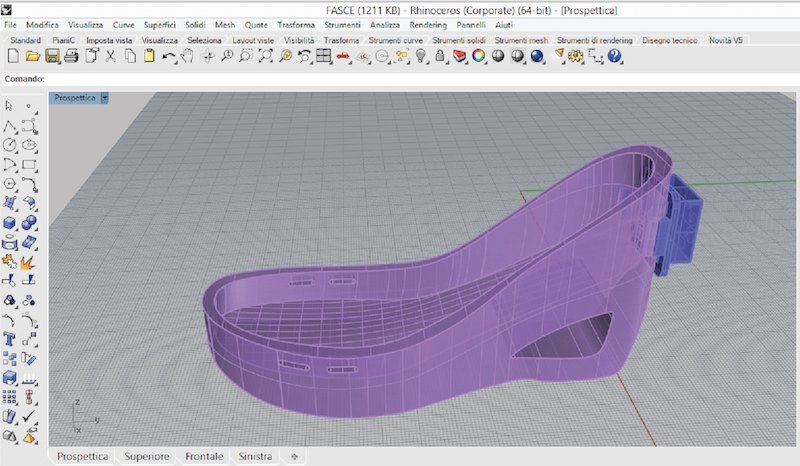
Parametric modeling with Antimony
I have to discover Antimony, thanks to the FabAcademy class, and for me is a very good software to model parametrically.
Antimony, is good to produce 2d design, to export png files. But there’s limitation or any problems to export stl files. Exported files are too big. I understand the power of the provided API but got frustrated by the lack of ready to use shapes apart the basic ones. One severe limitation in my opinion is the lack of an API for creating meshes out of polygons or triangles.
In the firts time I tried Antimony to design the heel for my final project. It’s good to create parametric heel. because it’s possible to change easily the height and modify the basic form.
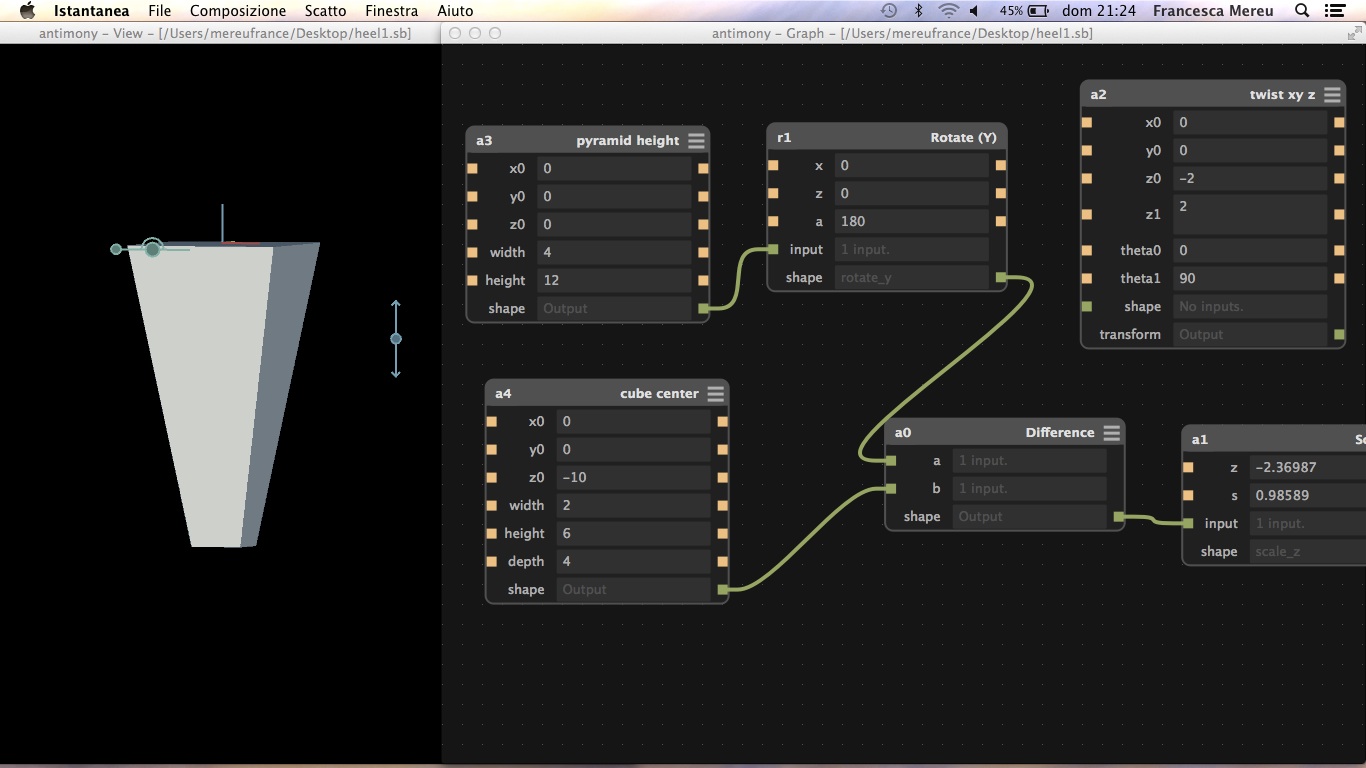
There are some variations of the heel’s form: I used a “twist”, modifier with three sizes: 90° -60-25 degrees,
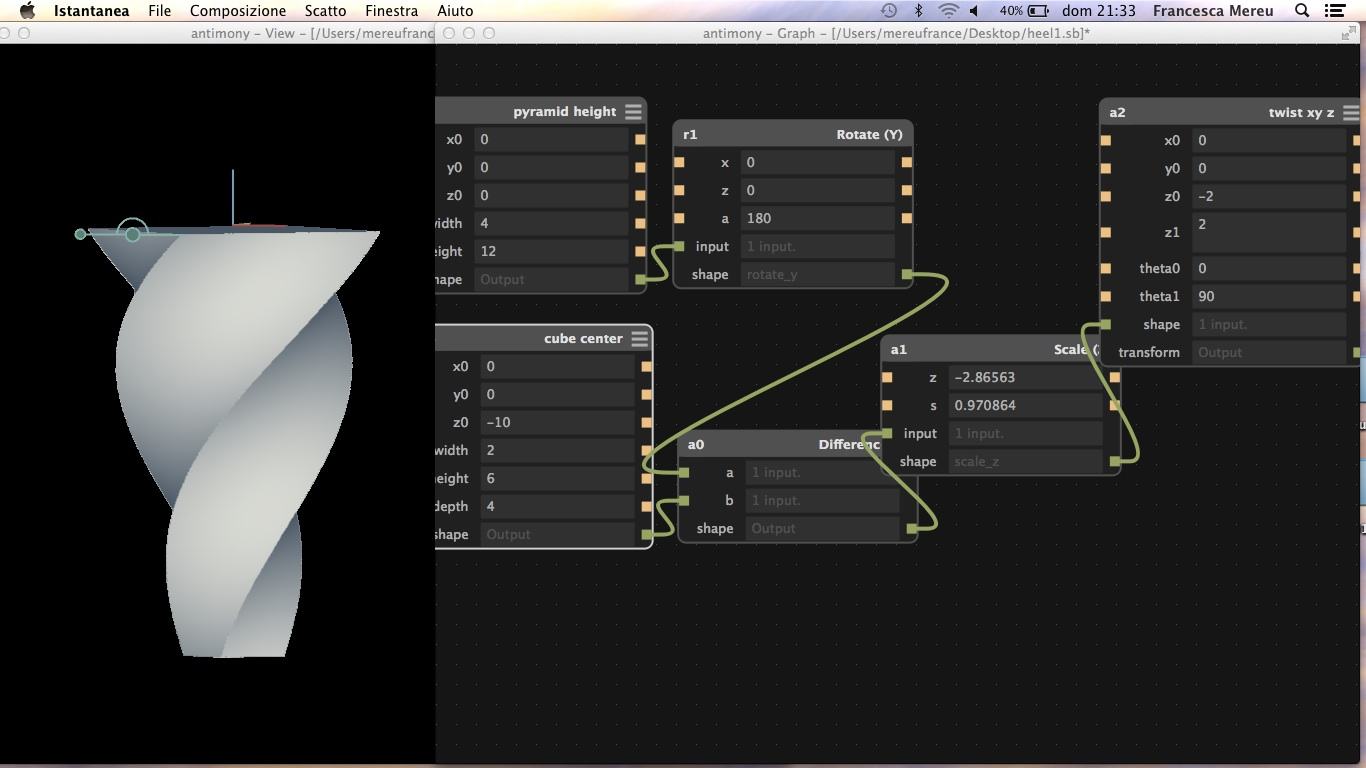
I managed then to build a parametric version of my concept using Grasshopper. It is a software very good for designers who are exploring new shapes using generative algorithms, Grasshopper® is a graphical algorithm editor tightly integrated with Rhino’s 3-D modeling tools. Unlike RhinoScript, Grasshopper requires no knowledge of programming or scripting, but still allows designers to build form generators from the simple to the awe-inspiring.
I used only one extra function from the MCad add-on library to make rounded cubes, relying on the core language for the rest and found it quite intuitive. Being able to build shapes using triangles was a real plus. Using variables for most values I thought could be changed, and trying to compute the others in relation to those made it easy to create a parametric model. I must admit that the experience in creating resolution independent GUI helped a lot in this process.
Source Files
-heel-sketchup File
-heel-antimony File
-shoe-Rhino File
-module-Rhino File
-module-sketchup File
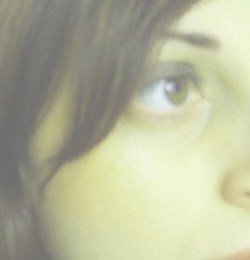 Francesca Mereu
Francesca Mereu